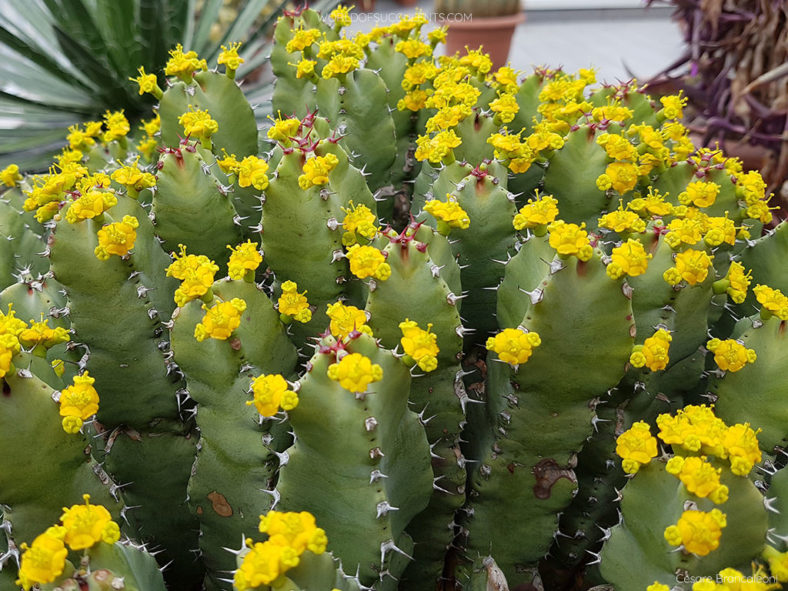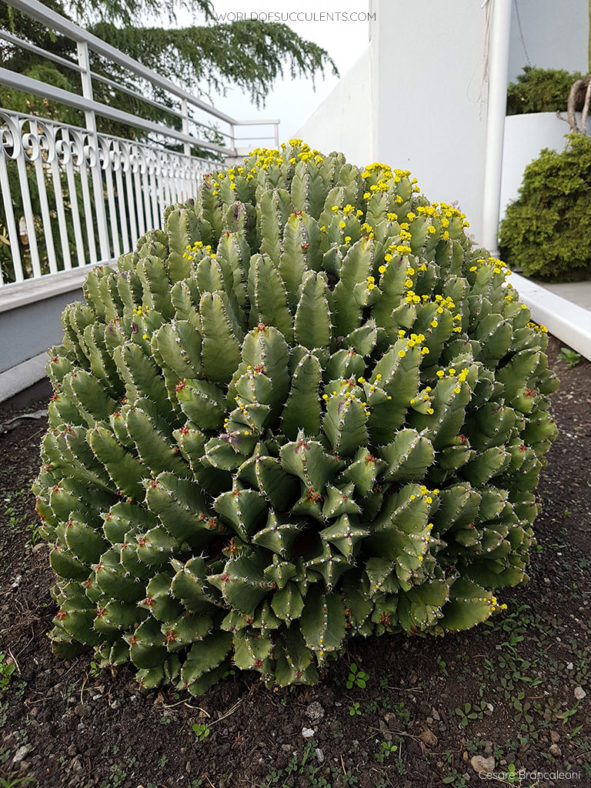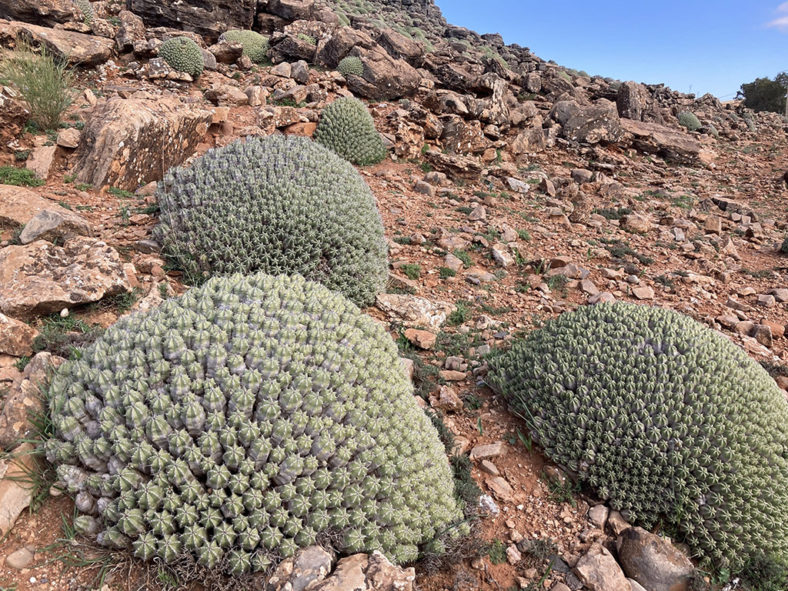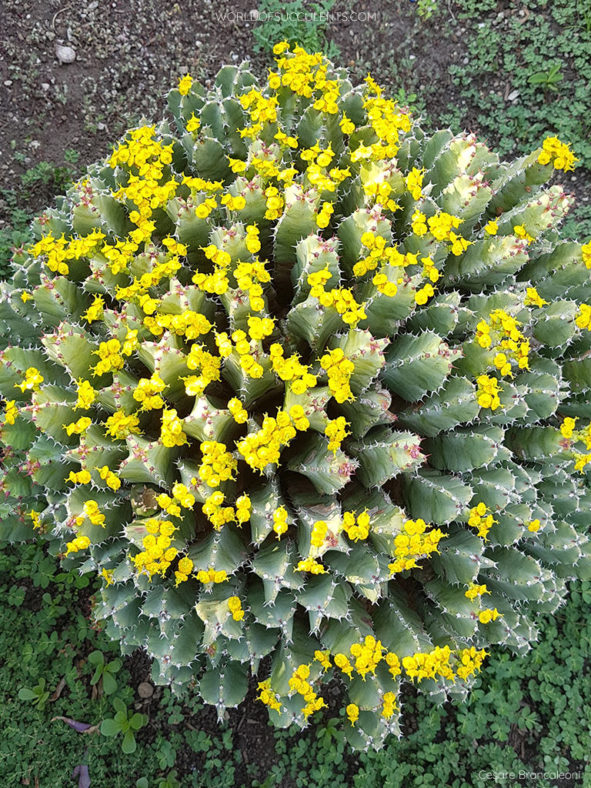Scientific Name
Euphorbia resinifera O.Berg
Common Name(s)
African Spurge, Euphorbium, Moroccan Ground Spurge, Moroccan Mound, Moroccan Mound Spurge, Resin Spurge, Staghorn Coral
Synonym(s)
Euphorbia resinifera var. chlarosoma, Euphorbia resinifera var. chlorosoma, Euphorbia resinifera var. typica, Tithymalus resinifer, Tithymalus resiniferus
Scientific Classification
Family: Euphorbiaceae
Subfamily: Euphorbioideae
Tribe: Euphorbieae
Subtribe: Euphorbiinae
Genus: Euphorbia
Etymology
The specific epithet "resinifera (res-in-EE-fer-uh)" means "resin-bearing" and refers to the toxic latex that the stems exude when cut.
Origin
Euphorbia resinifera is native to Morocco. It occurs on the slopes of the Atlas Mountains.
Description
Euphorbia resinifera is a dense succulent shrub with upright, four-angled, generally leafless stems with rows of paired short and sharp spines extending along the angles. It grows slowly, reaching up to 2 feet (60 cm) in height and 6.6 feet (2 m) in diameter, forming a cushion-shaped clump. The cactus-like stems are thick, fleshy, and dull green to bluish-green. The spines are about 0.4 inches (1 cm) apart and can grow about 0.25 inches (0.6 cm) long.
The flowers are small, bright yellow, and appear from late winter to early spring. Flowering is rare out of the native habitat of the species.

How to Grow and Care for Euphorbia resinifera
Light: This succulent is a sun lover. Place your indoor E. resinifera in a sunny window. You may place the pot on the balcony or in the garden from spring to fall. Increase sun exposure gradually to prevent sunburn.
Soil: E. resinifera requires well-drained soil. Use a commercial potting mix formulated for succulents, or make your own.
Temperature: High summer temperatures are not a problem, but low winter temperatures can damage or kill your plant. E. resinifera can withstand temperatures as low as 20 °F (-6.7 °C). USDA Plant Hardiness Zones 9а to 11b, 20 to 50 °F (-6.7 to 10 °C).
Watering: From spring to fall, water when the top inch (2.5 cm) of soil feels dry. Reduce watering in winter. Give it just enough water to prevent wilting. The best time of the day to water your E. resinifera in the warm season is the evening.
Fertilizing: Plants in a pot need regular feeding. Apply a balanced fertilizer in a 10-10-10 NPK formulation, diluted to 1/4 strength weekly during the growing season.
Repotting: E. resinifera will benefit from repotting, but it does not need to be repotted yearly. When your plant is outgrowing its pot, it is time to repot it in a larger pot and give it a fresh potting mix. The repotting is best done in early spring, at the beginning of the growing season. Wear gloves, protective clothing, and appropriate eye protection when repotting this succulent.
Propagation: The easiest and fastest propagation method for this plant is by cuttings. It can also be grown from seeds, but it can be difficult for seeds to germinate. The best time to take cuttings is in spring or summer. Sow the seeds in spring.
Learn more at How to Grow and Care for Euphorbia.
Toxicity of Euphorbia resinifera
E. resinifera produces a toxic white milky sap that can irritate the skin and eyes. Therefore, keeping your plant away from children and pets is best.
Links
- Back to genus Euphorbia
- Succupedia: Browse succulents by Scientific Name, Common Name, Genus, Family, USDA Hardiness Zone, Origin, or cacti by Genus
Photo Gallery
Click on a photo to see a larger version.


